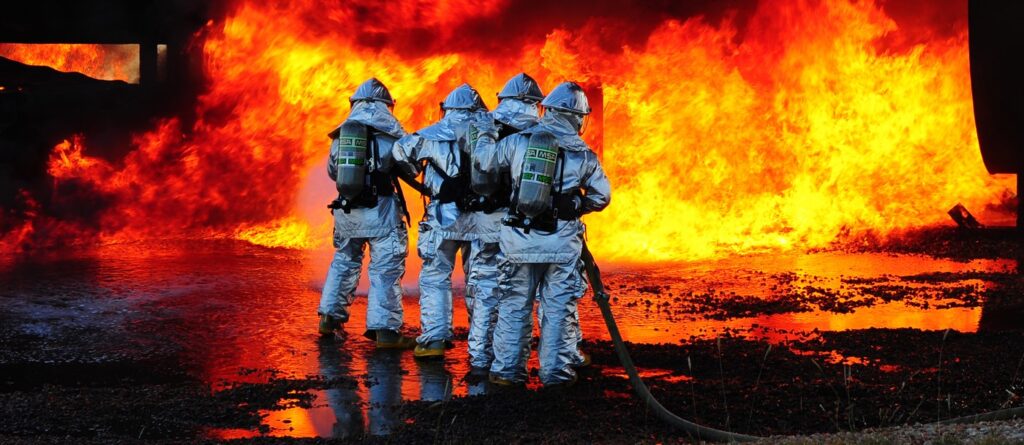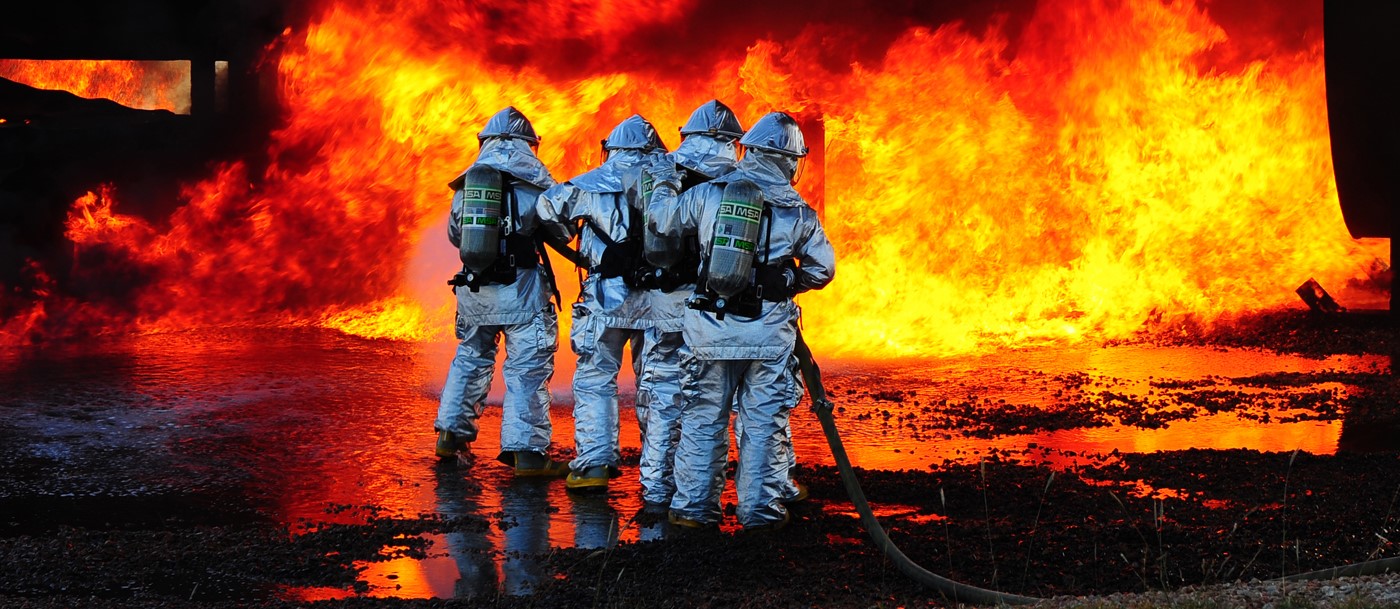49 tons of toxic PFAS have been removed from state’s fire stations
Originally published by ecoRI News, a nonprofit newsroom covering environmental news in Rhode Island. Read more at ecoRI.org
BURRILLVILLE — In November, the Rhode Island Department of Environmental Management identified six major sources of PFAS contamination as part of the state’s first robust investigation into how the toxic substances have poisoned drinking water supplies.
Among those confirmed sources are fire stations. Many of the state’s 160 fire stations pose a similar threat as closed landfills, especially in rural areas without access to a centralized public water system.
The 208-page draft plan noted that PFAS releases from the Oakland Mapleville Fire Department that had been in operation for less than 20 years contaminated water resources in the Burrillville village of Oakland.
The system that supplied the village’s water for six decades was shut down in fall 2019. The contamination affected some 55 families and six private well owners once served by the Oakland Association.
Oakland was then tied into the village of Harrisville’s water system, at a cost of $2 million. Prior to that, Oakland residents had relied on DEM to deliver jugs of water for cooking, drinking, and brushing teeth.
Fire stations, like Department of Defense sites, are prime sources of these ubiquitous poisons thanks to the chemicals found in both firefighting gear and firefighting foam.
“We all thought it was completely safe — the warnings I read through the years said don’t drink it and don’t get it in your eyes because it stings, but it was not something we would suit up for or take any extraordinary precautions around,” Jeremy Souza, a longtime firefighter and former deputy fire chief at T.F. Green International Airport, told the National Fire Protection Association in 2022. “Now I have retired colleagues whose attitude I would describe as outright fear. For those of us who essentially bathed in it for decades, I’m concerned about what exactly I’ve been exposed to.”

In the 1970s, scientists and health experts began raising concerns about the potential health hazards of per- and polyfluoroalkyl substances, better known as the four-letter acronym or as “forever chemicals.”
Today some 15,000 of these synthetic chemicals can be found in clothing, eye makeup, dental floss, food packaging, nonstick pans, paints, carpets, and furniture — basically, PFAS can be found in any product that is grease-, stain- or water-resistant.
“PFAS are one of the world’s most intractable pollutants, highly complex, and found just about everywhere,” DEM director Terry Gray said when the draft report was released late last year.
In 2018 DEM’s Office of Emergency Response established an aqueous film forming foams (AFFF) collection program by reaching out to the Rhode Island Association of Fire Chiefs. The group forwarded DEM-crafted letters, with information about how to remove and dispose of these toxic firefighting foams, to all Rhode Island fire departments.
In December 2019, DEM held an initial collection of AFFF at the Rhode Island Fire Academy in Exeter. Eight fire departments participated, and 18,000 pounds of firefighting foam was collected.
The foam was placed in secondary containment systems, and each brand was sampled by the Environmental Protection Agency for its analytical library. The library provides an inventory of different types of AFFF to help fingerprint future sources of PFAS found in the environment. This type of fingerprinting has been commonly used with oils and PCBs to provide clues on the source of contamination, according to DEM.
Three more AFFF collections have since been held, with another 80,120 pounds collected. The Rhode Island Fire Academy, which opened in 2012 and never used PFAS-containing foam, served as the central location for all four drop-offs. Containers of AFFF, mostly 5-gallon buckets, were dropped off, put in 275- to 330-gallon totes, and picked up by Clean Harbors to be brought to an incinerator.
In total, the four AFFF collections removed 98,120 pounds — 49 tons or some 11,000 gallons — of PFAS-tainted firefighting foam from the state, at a cost to taxpayers of more than $200,000, according to Jim Ball, chief of the Office of Emergency Response. There’s still more to be collected.
He and Fire Academy’s director Mark Pare said most of the AFFF that remains in Rhode Island can be found in 30-gallon tanks on fire trucks. There are likely 5-gallon tubs of the foam also stashed away in fire station basements across the state.
Ball said fire departments have been encouraged to drain fire truck tanks of AFFF into the 5-gallon tubs returned to them after the previous collections in 2019, 2022, and 2023. He noted that this foam, the tubs that carried it to collection, and the other tubs used to hold the tank rinse will need to be properly disposed of.
Disposal won’t be cheap. The cost of disposing of a thousand 5-gallon pails is $15,000 and the cost of taking away 10 totes has increased from $66,000 to $76,000, according to Ball.
The AFFF foam in fire trucks can be used in emergencies but can’t be used in trainings, according to Ball. He said most departments are staying away from using it.
When the fiscal year ends June 30, there will be no funding for AFFF collection and disposal. Ball said there is currently no money in the governor’s proposed fiscal 2025 budget to pay for AFFF removal.
“We’re making progress, and by the end of this year or next we hope to have removed all of this legacy foam from the state,” Ball said.
Fire departments started using AFFF in the 1980s, according to Pare, when ethanol began to be routinely added to gasoline. Before that, fire departments used protein-based foams, which Pare said were commonly called “fish guts” by firefighters. GreenScreen-certified firefighting foams that are PFAS-free are now used.
“We’ve known for a while these chemicals were a problem,” said Pare, who began his firefighting career in Providence in 1979. “We needed to get rid of this stuff.”
The first firefighting foam was developed in 1902 by a Russian engineer and chemist employed by the fossil fuel industry. He was trying to find a substance to combat petroleum-based fires for which water is ineffective. His solution was the first firefighting foam that was able to extinguish petroleum fires by depriving them of oxygen.
In the early 1960s the Navy began working with the Minnesota Mining and Manufacturing Co. (now known as 3M) to develop a firefighting foam that could quickly extinguish liquid fuel fires aboard its ships. In 1966, researchers found that the use of synthetic chemicals perfluorooctanoic acid (PFOA), perfluorooctanesulfonic acid (PFOS), and other PFAS effectively suppress fuel-based fires.
By 1970, all Navy facilities were required to have AFFF on hand.
AFFF is a combination of PFAS compounds combined with surfactants (sodium alkyl sulfate, alkyl glucoside, and alkyl amidobetaine), solvents (2-butoxyethanol, 2-(2-butoxyethoxy)ethanol, 1,2-ethanediol, and triethanolamine), solubilizers, and stabilizers.
The Department of Defense stopped buying PFAS-containing firefighting foam last year and is expected to phase it out entirely this year.
PFAS have been labeled “forever” because it is nearly impossible to eliminate them once they have entered the environment. No medical procedure can remove them from your body. It’s this persistence that leads to their toxicity. They have been linked to several cancers, fertility problems, an increase in the risk of asthma, and, like lead, can affect growth, learning, and behavior in infants and children.
The DEM investigation was part of a suite of actions from state officials to respond to the growing amount of forever chemicals being detected in drinking water. The action was required by a state law passed in 2022. As of last July, Rhode Island water systems are required to test their drinking supplies for PFAS and report the results to the state Department of Health.
PFAS have been accumulating in our bodies for decades, and most people have been exposed. A 2015 report by the Centers for Disease Control and Prevention found PFAS in the blood of 97% of Americans.
Six forever chemicals are of particular concern: PFOA, PFOS, PFNA, PFHxS, PFBS, and GenX. Studies have found that the first two, the most extensively produced and studied of these chemicals, are particularly dangerous. PFOA and PFOS are no longer manufactured in the United States, but they are still produced internationally and can be imported in consumer goods such as carpet, apparel, rubber, and plastics.
Researchers at the University of Rhode Island’s Sources, Transport, Exposure & Effects of PFAS have linked these human-made compounds to severe health impacts, including kidney and testicular cancer, cardiovascular and thyroid disease, and low birth weight. They have been associated with impaired liver function, chronic intestinal inflammation, higher cholesterol, weakened immune response, and elevated blood pressure during pregnancy.
Forever chemicals were first manufactured in the late 1940s by chemical giants 3M and DuPont. In 1951 DuPont began using PFOA to make Teflon, a material used in nonstick pans. A few years later, scientists altered PFOA to make PFOS for waterproof coatings.
Read more about forever chemicals in Rhode Island in this recent Ocean State Stories piece.






